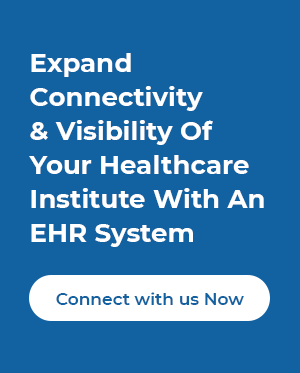The role of power-packed miniaturized technology solutions in every field today has brought decisions at our finger-tips. With a few clicks and scrolls, one can access information boundlessly.
The same has been thoughtfully crafted to serve healthcare needs. Technologists have worked their way to help build dependable healthcare, accessible even in difficult areas and times. Bill Gates has put this rightly:
“By giving us comprehensive access to our personal health information, digital technology can make us all agents for change, capable of pushing for the one thing we all really care about: A medical system that focuses on our life long health and prioritizes prevention as much as it does treatment.”
Electronic health records or EHRs came into existence for similar reasons. A clear motive of creating a comprehensive health portfolio of the individual, accessible by both, the individual and the healthcare provider, EHRs contribute to a wholesome healthcare experience. All the more, they serve as rich data sources for those who plan healthcare accessibility, policies, development, and financial coverage.
The development of an EHR itself, a very technical domain, has outcomes that are even more gainful.
I plan to take you on a little expedition through the journey of the patient or member data to a sophisticated EHR. There can be multiple approaches to begin work towards software development for an EHR, a good one could however begin simply with a healthcare mobile app.
A very common practice is to create a software, custom-designed as per the needs of those who will utilize the EHR every day. But a dynamic and progressive thought would add to it, a mobile application to enhance the patient experience and enable easy quality data collection.
Why should healthcare mobile applications have a deeper motive?
Every application you carry on your phones/tablets or systems seems to capture some essence of your life. For example, the food industry analysts study data from food apps to understand what the community spends on, and the fashion industry grabs the feel of what is trending.
The same is the case with the plethora of applications that track fitness and health through various parameters. There is no doubt that their contribution to the improved behavior of their users across age-groups is significant.
The real impact of this data capture and behavior understanding will matter only when the members can use all this in the long run for their health management.
This is what forms the driving force behind community healthcare platforms. They serve the management of healthcare organizations as well as the government with rich and comprehensive electronic health records. This data source is used for advanced analytics and priceless insights that help them make informative and planned decisions towards improving healthcare.
So, every healthcare application must entail this motive and contribute to this data pool to fill in the gaps for a better healthcare management.
EMR & EHR – The sense and The Expanse – Differentiating the EMR & the EHR
The domain of healthcare is enriched with new terminologies every day. With so many integrations happening, creating a clear picture in your mind can help you understand what you want to build.
Developing an electronic record system for any hospital or clinic brings you to a case where the developer must be sorted on the purpose. You could be trying to solve a problem for the organization, and yet end up developing something incomplete.
An EMR (Electronic Medical Record) and EHR (Electronic Health Record) are very close in their rationales but quite different in their basic structure and connectivity.
While an EMR is simply an electronic record of a patient created by one doctor for one practice or indication, the EHR is the complete health record of the patient for all the indications with a lot many other aspects also.
The possibility of sharing information on a single patient between different HCPs (health care providers), enabling them to manage the patient from all health facets, is what makes an EHR worthy of development and integration within any healthcare system.
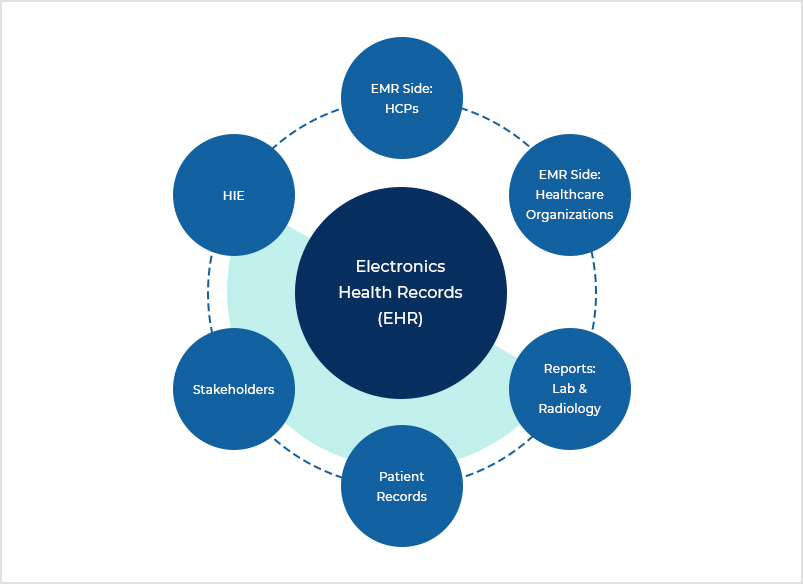 If each of us had an opportunity to view all our health details, analysis of past and present vitals with reminders and short term goals planned, in a single application on our phones, how easy would managing health seem to be? An obvious answer for an attractive path to walk on.
If each of us had an opportunity to view all our health details, analysis of past and present vitals with reminders and short term goals planned, in a single application on our phones, how easy would managing health seem to be? An obvious answer for an attractive path to walk on.
Multi-device integration
A thoughtfully developed EHR will enable access of all information to all authorized components of a healthcare ecosystem. But since not all conduct is possible over a mobile, a multi-device integration becomes imperative. Some features need action through a desktop and some through a self-service kiosk.
The EHRs need to be developed such that the nurses, doctors, accounts, board, and the management, can all play their parts efficiently on their assigned devices.
The multi-device integration feature also enables gathering data from different devices, applications, or fitness trackers used by the member. Many third-party integrations into the EHR application can enable collecting the data from multiple devices.
This helps understand the patient better in terms of their lifestyle. The benefits of access to such a comprehensive profile need no description.
Easy documentation
When everything is entered and stored inside a single file, it’s tracking, updating, analyzing, and sharing automatically becomes a trouble-free activity. Lengthy documentation and maintenance of records can now be done with much ease. Plus, everyone who is a part of the healthcare delivery can contribute to the data-pool, enriching the overall experience.
Standardized reporting
Every hospital/clinic has its own style of collecting information. Some prefer history to be explanatory and some just require brief answers to questions in order to understand the causal relationships.
The same information when traveling to different healthcare professionals undergoes evolution and ends up as a long record which seems difficult to comprehend.
The EHR promises to sort this with maximal information flow through a uniform format. Everyone in the chain accessing it is able to draw key information quickly, saving time, and improving efforts.
Secure health information exchange (HIE)
The purpose of an EHR is fulfilled only when different stakeholders within the cycle are able to play their parts of improving the system. Set standards while developing the EHR should be thus in-built.
CCR (Continuity of Care Record) and CCD (Continuity of Care Document) certifications allow EHRs to connect to the HIE in their regions creating a holistic view of every patient’s records. The HIE hence becomes a repository of patient data, pooled in from various centers in that area, accessible through secure and regulated channels.
The EHRs developed in accordance with these regulations are thus able to enrich the HIE with priceless data.
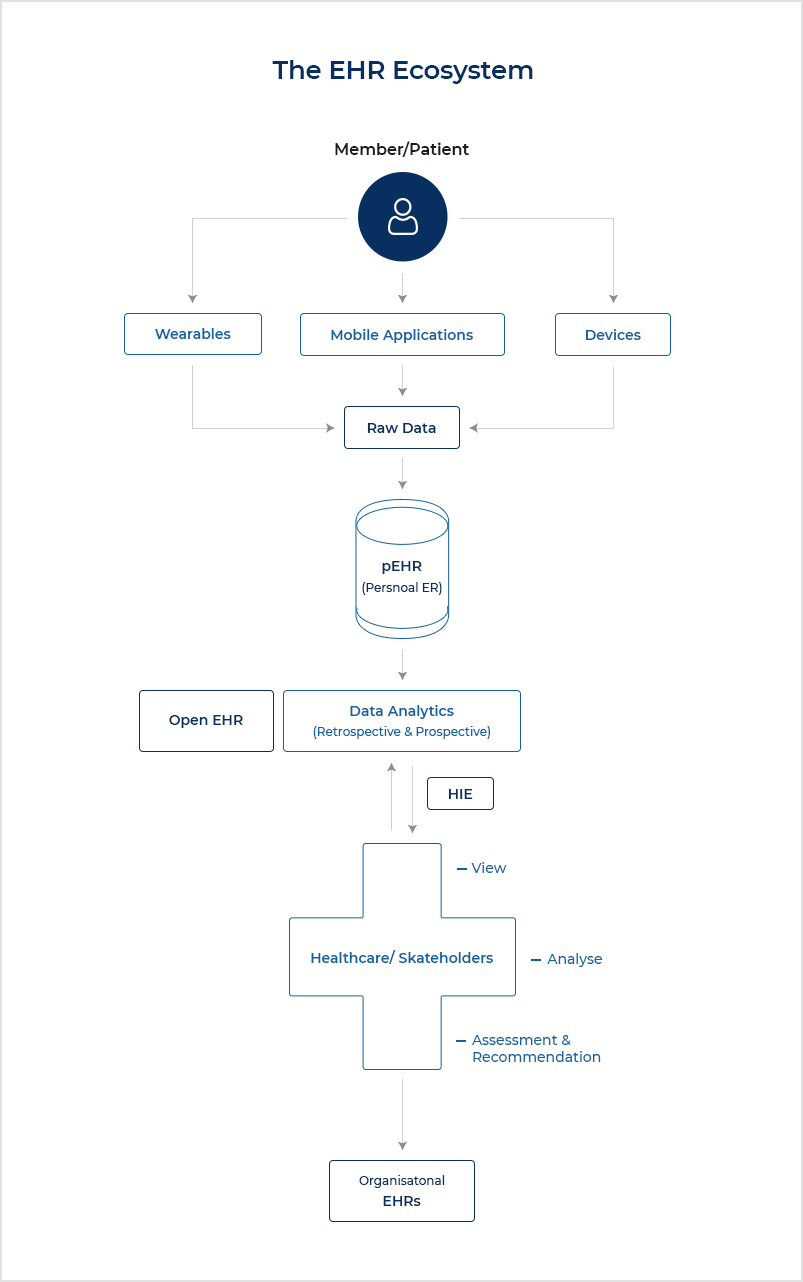 The Stakeholders – What does the EHR offer to the healthcare ecosystem?
The Stakeholders – What does the EHR offer to the healthcare ecosystem?
A stakeholder is one who benefits out of any development and integration. An EHR serves many across domains. There are primary, secondary, and tertiary stakeholders that draw information relevant to their businesses for immense value addition. Beginning with the patient and the caregivers to the insurance agents, employers, public authorities, and the healthcare industry as a whole, the EHR and the HIE system upscales every player.
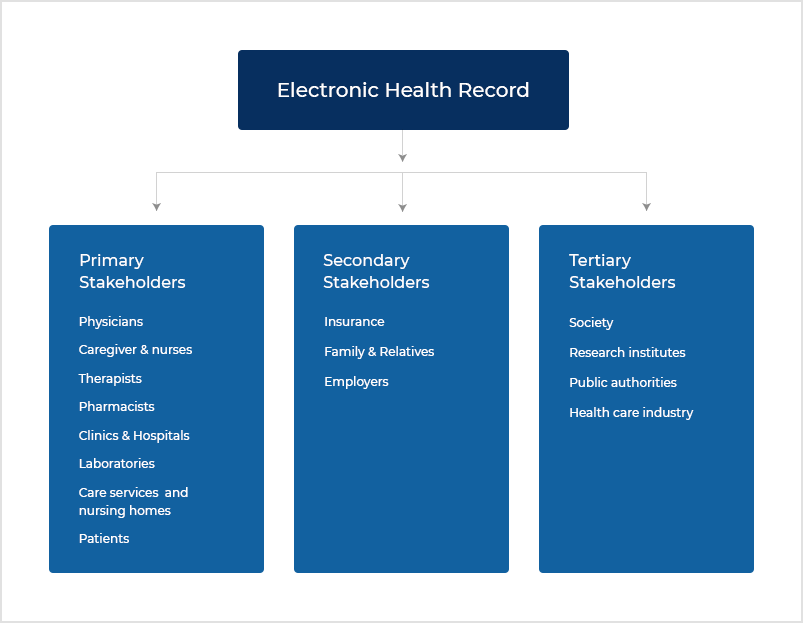 How would you suppose an EHR integration could help make millions of dollars?
How would you suppose an EHR integration could help make millions of dollars?
When a software installed into any organization improves efficiency, enhances satisfaction amongst those paying for your services, the proportionality is not a wrong assumption.
If you top this with the priceless data-pool this software is able to generate for insights worth millions, there remains no doubt you have supplemented your system with an essential ingredient.
Healthcare today is going exponentially virtual. With the surge in telemedicine from 11% to a whopping 76% in 2019, the relevance of launching an EHR within a healthcare system was never more.
The analysts at McKinsey predict a $250 billion of healthcare spending to be directed towards the virtual segment of it. But how did they reach this analysis? From where do they gather data for such trendsetting insights?
When the McKinsey analysts report that 20% of all Medicare, Medicaid, and commercial expenditure divided across healthcare, work, and home fitness is going online, the insurance companies and the employers draft policies accordingly. They would pay anything to access this data for such analytical outcomes.
The hospital management and board are able to create environments favoring this trend, modernizing healthcare all-the-more.
As a result of an EHR software integration, the entire chain is augmented.
EHR – Discovery, System Design & Development
Discovery towards an iterative & patient-centric design for an in-built care continuum
Understanding the pain points and the demand in defining user stories that fulfill the sole purpose for the EHR development is the most crucial of steps. The main questions that need to be answered are:
- How will the EHR contribute to the operations of your organization or clinic?
- What are the best EHR practices that will help achieve these goals?
Answering these must lead to achieve what they call is the ‘quadruple aim’:
- Improve patient experience.
- Improve the health of the population.
- Reduce overall health costs.
- Improve professional satisfaction.
All in all, health must be embedded in the ‘core continuum’. This will allow better tracking of patients, inculcating value-based care. Once the gravity of the EHR is communicated and understood, the developer can begin working towards the user stories and wireframes.
System architecture – the developer’s role
There are fundamentally 3 steps that will always make the difference:
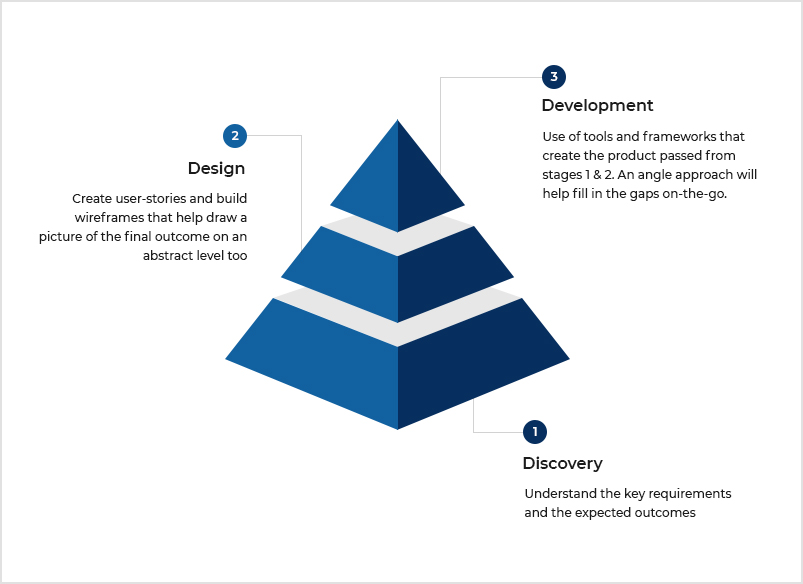 Discovery, Design and Development phases are critical for a sound development. The development teams usually have experts that will sit with you to understand what you are looking for.
Discovery, Design and Development phases are critical for a sound development. The development teams usually have experts that will sit with you to understand what you are looking for.
Involving them from the very beginning of the design and discovery phase will contribute to an efficient and economical development. The operability cost and speed of development are dependent on the changes that are suggested on-the-way. Working along with the developers from the start to bring out a simple, informative and relevant software is the best way forward.
The developed EHR must be responsive to different screens. Smooth integrations across devices is also one of the primary expectations.
The software development team and the EHR owners must work in a concert to make the design iterative and the development agile to build quality through every stage.
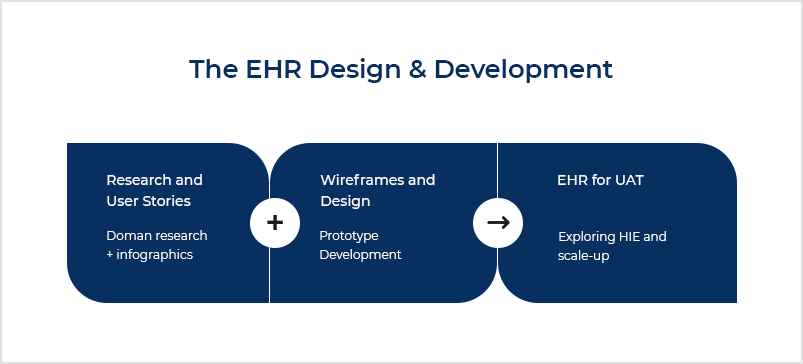 The tailor-made EHR should ultimately be able to meet the strategic goals and needs of all the stakeholders.
The tailor-made EHR should ultimately be able to meet the strategic goals and needs of all the stakeholders.
The secure flow of information – HIE component
Although the first and foremost beneficiary of the EHR is and should always be the patient or the member, there are secondary and tertiary stakeholders also, who must be able to grab some fruits from this basket. The EHRs developed in-line with the certifications and federal compliances are the ones connected to the central repositories.
The secure access set-up ensured with best practices all through the development process allows for information exchange between different healthcare providers as well as the stake-holders. The healthcare, insurance and employee policies as a result plan for a better future for everybody.
The implications of secure data sharing thus go a long way into bringing improvisations within the system.
Compliances & Certifications
Strict laws and regulations govern which data and through which administrator is going to become a part of the central repository of data. Some standard codes of conduct are a part of the development process to ensure these connections.
Internationally certified Health IT Structure
The developer adds features into an EHR according to the Health Information Technology for Economic and Clinical Health (HITECH) Act of 2009. This leads to adopting the EHR as per standards in its true sense.
This helps the EHRs comply with international standards for uniformity among communities.
1. GDPR – General Data Protection Policy
This policy by the EU is directly applicable to the healthcare data collection and use. Ensuring data protection along with the capacity to correct and erase information within the secure line, reduces chances of error and malign incidents.
2. HIPAA – Health Insurance Portability Accountability Act
If the EHR is to function and support a US organization or healthcare body, its software designing and programming must be HIPAA compliant.
3. HL7 for interoperability – HL7 with Fast Healthcare Interoperability Resource (FHIR)
This guideline is specific for developing the EHR software, to be integrated with a number of devices for data sharing and transfer. A developer will get data formats, HTTP protocols, APIs and a lot more of technical support through the HL7 interoperability inclusion.
4. Code sets
The idea behind the development should be to keep the formats universal. As uniform and standard the approach is, better is the acceptability and experience of the EHR deployment. The entries of diseases and medications must be linked to international classifications like the International Classification of Diseases, Ninth Revision or Tenth Revision (ICD-9 or ICD-10), Systematized Nomenclature of Medicine (SNOMED), National Drug Code (NDC), RxNorm and the pharmacopoeia.
Mapping to code-sets can be as per demand of the healthcare provider and area on EHR use.The entries automatically pick up information according to these code-sets and store them appropriately for logical analytical insights later. Including all these could help save the HCPs (health care providers) a load of documentation-time in the software.
Enhance your care center’s value: upgrade to an EHR system now
EHR Development – Components & Flow
Planning behind the design and architecture form the core strength of this software development.
A standard and most common EHR can be taken analogous to a dish that requires some essential ingredients, without which it will be incomplete plus will leave a bad after-taste.
Similarly, a poorly planned EHR development will build weak-links inside the healthcare system. Every EHR thus, must endorse basic practices for every healthcare institute to follow and withhold.
Along with custom-built features, important elements that definitely need to be a part of the EHR development are:
1. A Patient or member page
This is supposed to be the landing page to register any member or patient into the system. All the significant details related to the bio and history will form a part of this segment. Like age, family history for diabetes, hypertension, ongoing chronic medications, procedures done, children, etcetera etcetera.
This feature enabled for real-time entries is the key value-add. A patient ID generated becomes the quick-link to refer any case. Definitely making lives easy.
2. Medical history
Medical history is that precious component of member/patient health data that contributes not only to holistic healthcare but augments the decision making for the stakeholders also. This segment is segregated from the other records so as to understand the causal relationship of one’s health condition.
3. E-prescriptions
With healthcare going online, prescriptions are the component that needs to be referred to every time one visits a doctor. A separate tab in the EHR that stores all the previous prescriptions in chronological order, or even indication-wise, if desired is a must-have feature.
4. Charting
How an EHR presents every data is a display of the artistic skills of a designer from the development team. User-experience and BI features play a crucial role as to how well the information is comprehended by the users.
5. Lab analytics
Looking for reports and results by scrolling to the end of a record might seem to tire patients and their healthcare providers. When all reports placed in one folder, arranged in some order, propose to increase acceptance of the software installed, it becomes a not-to-miss segment while developing a custom EHR.
6. Reminders
Gentle pop-ups never harmed anyone. Instead, in the case of healthcare applications, they have proven to improve compliance and behavior patterns of those registered on these applications. When these include a visit and dosage reminder, the significance is multiplied by bounds.
7. Patient portal
A place where the patient can log-in to access all their information, placed under folders arranged systematically in chronology, is an attractive feature for almost all healthcare bodies dealing with patient care. Creating a portal with safety features embedded while log-in for secure access is an important part of the EHR development process.
The mobile application serves as a patient portal for making new entries, scheduling, reminders as well as comparative health records.
Who opts for an EHR development?
The EHR needs to function as a ready-to-refer card for the patient and the health providers. The current health being updated in real-time provides a ready reference for different health care providers to manage the patient without overlooking any important detail.
Now that we have discussed the EHR development process and its components, an obvious question that strikes is, who goes for an EHR development? Out of the listed stakeholders and their benefits, not everyone can take onus of developing this critical software.
Hospital chains, clinics and individual healthcare providers are regularly looking to upgrade their practices. Software and mobile app development teams ready to invade the domain of healthcare technology can strengthen healthcare infrastructure by partnering with those healthcare companies and organizations looking to launch community health and fitness programs.
Collaboratively, they all can create the intended difference with an EHR application at hand.
The EHR market & options
The impact of the Covid-19 pandemic has been a global one. With governments and private sectors both equally affected, the trend towards comprehensive digital solutions seem most apt. As per the latest McKinsey analysis, some key requirements can only enable healthcare systems to get normalcy back.
They identify that creating virtual care-capabilities, incentives for clinicians, better quantifiable outcomes and benefits that favor the advocacy of these technologies could help drive the systems better.
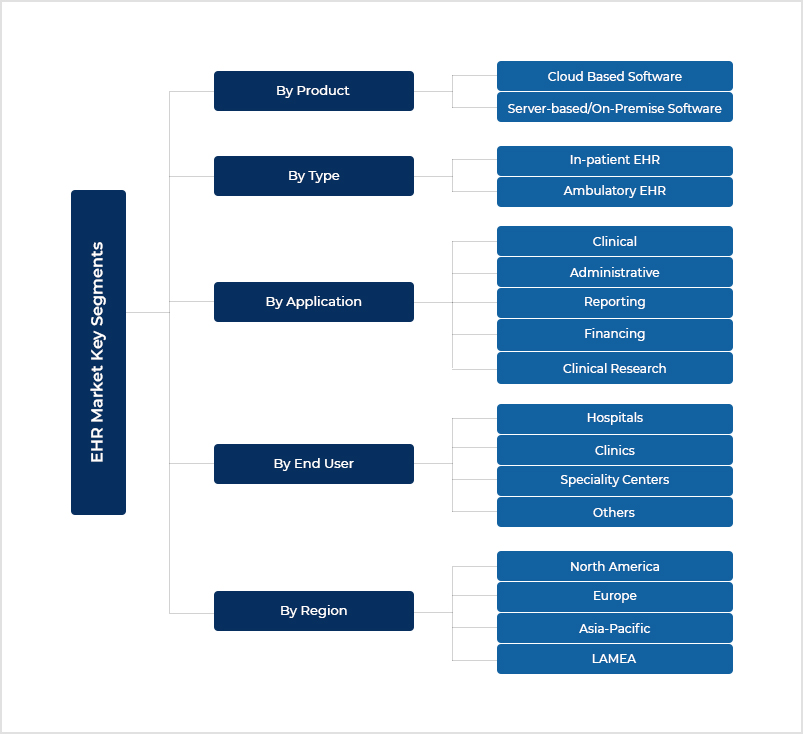 Several components like its administrative and clinical applications, digital reporting system, finance in healthcare as well as the clinical research applications seem like lucrative must-haves for the tough times the world is facing today. With changing times, the demand and penetration of these components within the EHR has risen.
Several components like its administrative and clinical applications, digital reporting system, finance in healthcare as well as the clinical research applications seem like lucrative must-haves for the tough times the world is facing today. With changing times, the demand and penetration of these components within the EHR has risen.
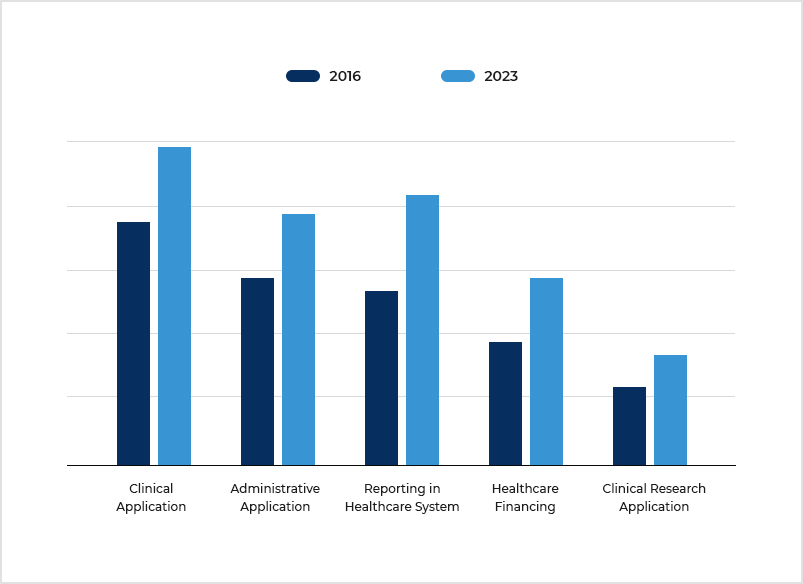
It seems that the healthcare bodies and systems that invest towards migrating to these with building capabilities for informed decision making are going to be the ones to survive. The healthcare community, all stakeholders as well as the technology development experts will need to work together towards renovating the healthcare delivery components that will drive market traction.
Setting the trend for virtual care delivery and accelerating value-based health outcomes, the EHR integration promises to satisfy all levels involved.
Why is custom-developed EHR a better option?
Another option could be to get the EHR software as well as its application built from the scratch, as per a user-centric design and favorable features. A custom-developed EHR will fulfill all purposes as well as satisfy all stakeholders to an EHR.
If the management and board are sorted with the certifications and regulations to adopt, the development team can begin with a design compliant to these requirements. Certain requirements should however remain mandatory like:
- Regional regulatory body compliance – HIPAA or GDPR – As per the region and scale of integration of the EHR, at-least one of the compliances, HIPAA or GDPR, must be met for acceptance across centers and healthcare bodies.
- Towards mobile-friendly design and development – both patients and doctors prefer mobility. An EHR mobile application, compatible with both iOS as well as android operating systems, increases the probability of more users coming on-board due to an enhanced experience.
- Reporting standards – The EHR must be developed to generate standard reports with easily comprehended graphs and comparisons.
- Secure data transfer – The development team must ensure secure access and transfer of all data between different ports.
- Performance monitoring – The EHR must be monitored and upgraded regularly for performance, standards and ROI. This will always help in a more acceptable and useful application at the hands of the patients and the healthcare providers.
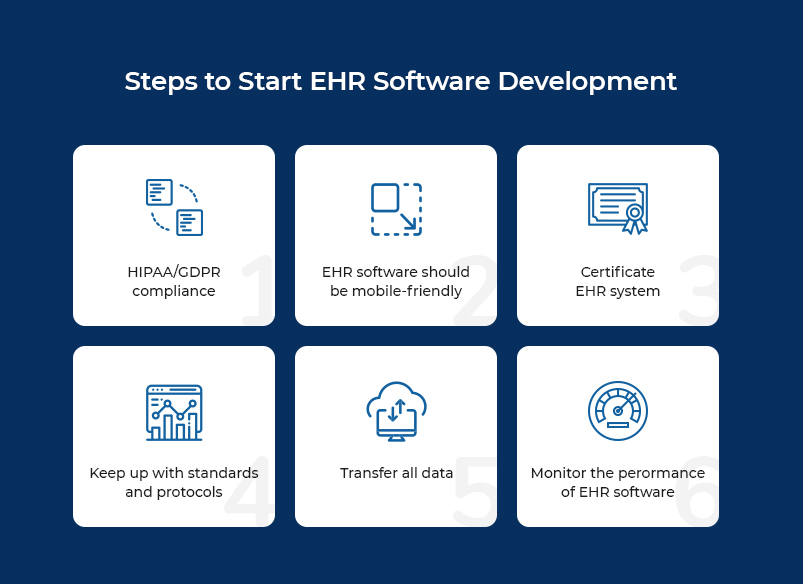 The teams developing the EHR software applications have all-round proficiency in different tech-stacks. The team must work on agile development enabling scope of improvement all through the development process.
The teams developing the EHR software applications have all-round proficiency in different tech-stacks. The team must work on agile development enabling scope of improvement all through the development process.
Usually for an EHR development, the front-end and back-end requirements for technology stack are defined during the design phase, depending on the scale of development and application desired.
With decisions on the language, database server, web server, frameworks and cloud servers made well in-advance, the front-end must comply with both iOS and android operating systems for a wider usability scenario.
Choose a vendor that can enrich the EHR with better logics, tasking and decision-supports.
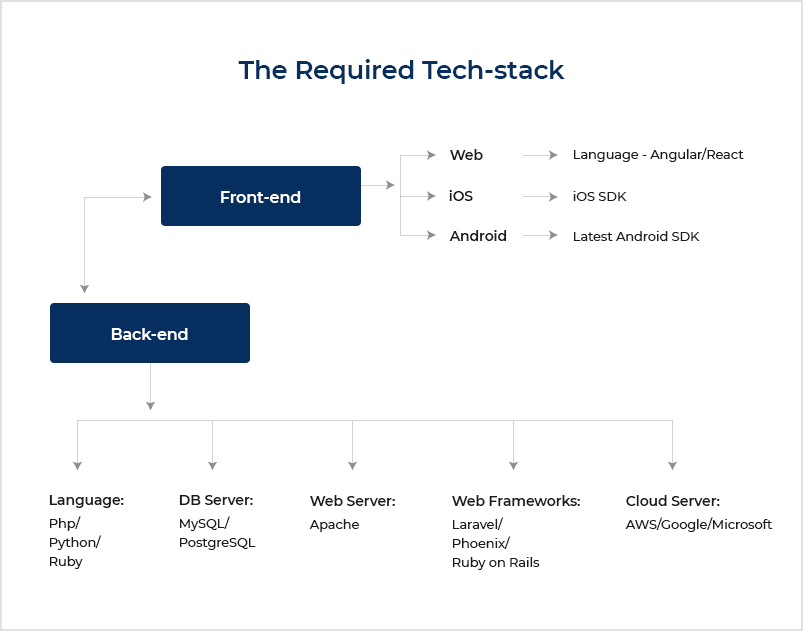 Conclusion
Conclusion
Research and industrialization have amalgamated beautifully to nourish the medical field for a better world. Integration of the EHR and its applications in healthcare has led to raising the bar within these practices.
With high-end technology stacks and frameworks being used for the designing, development and implementation of the EHRs, the scope for the integration of technologies like AI-ML have opened up.
The key point is to prepare to shift to a mobile-friendly, easily-accessible and improved healthcare system. We can now be assured of efficient and secure consultation from about anywhere.
The best time to experience privilege, as a patient, a healthcare provider as well as a stakeholder is now.
Pick your EHR development partner for a robust solution
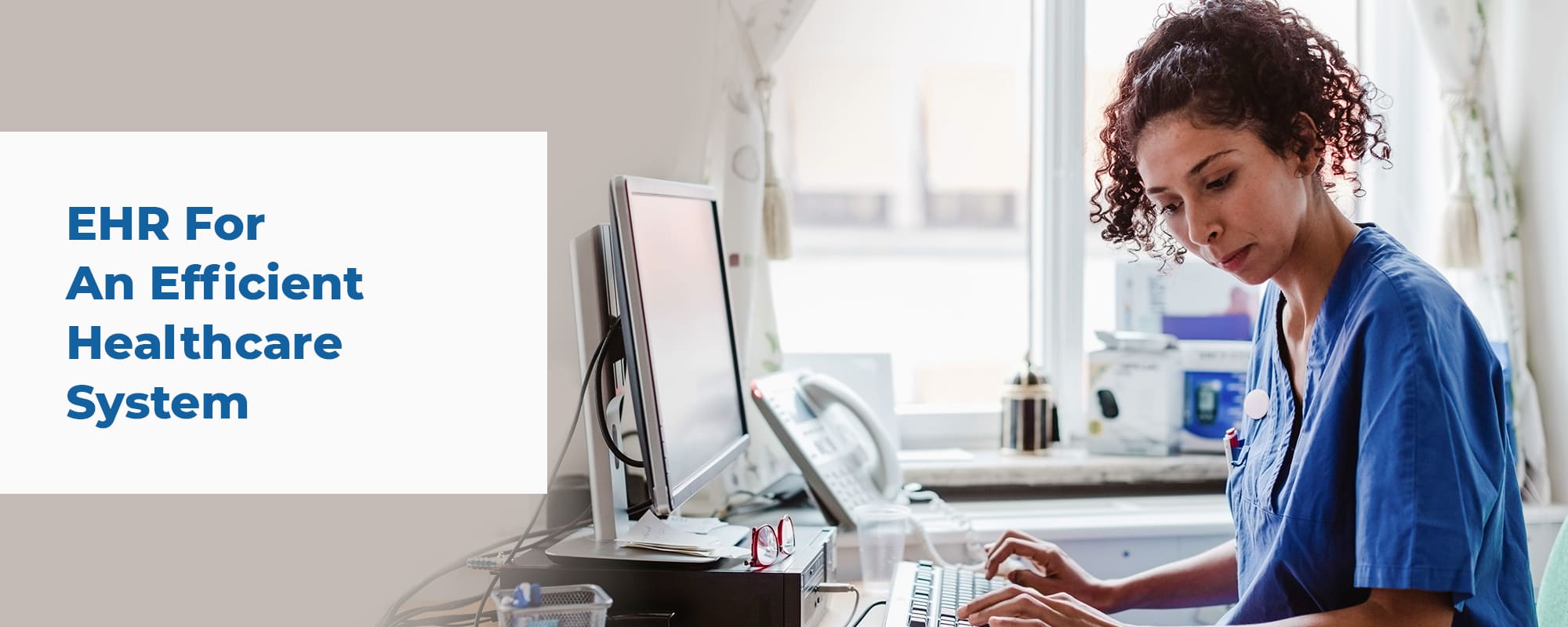

 The Stakeholders – What does the EHR offer to the healthcare ecosystem?
The Stakeholders – What does the EHR offer to the healthcare ecosystem? How would you suppose an EHR integration could help make millions of dollars?
How would you suppose an EHR integration could help make millions of dollars?




 Conclusion
Conclusion